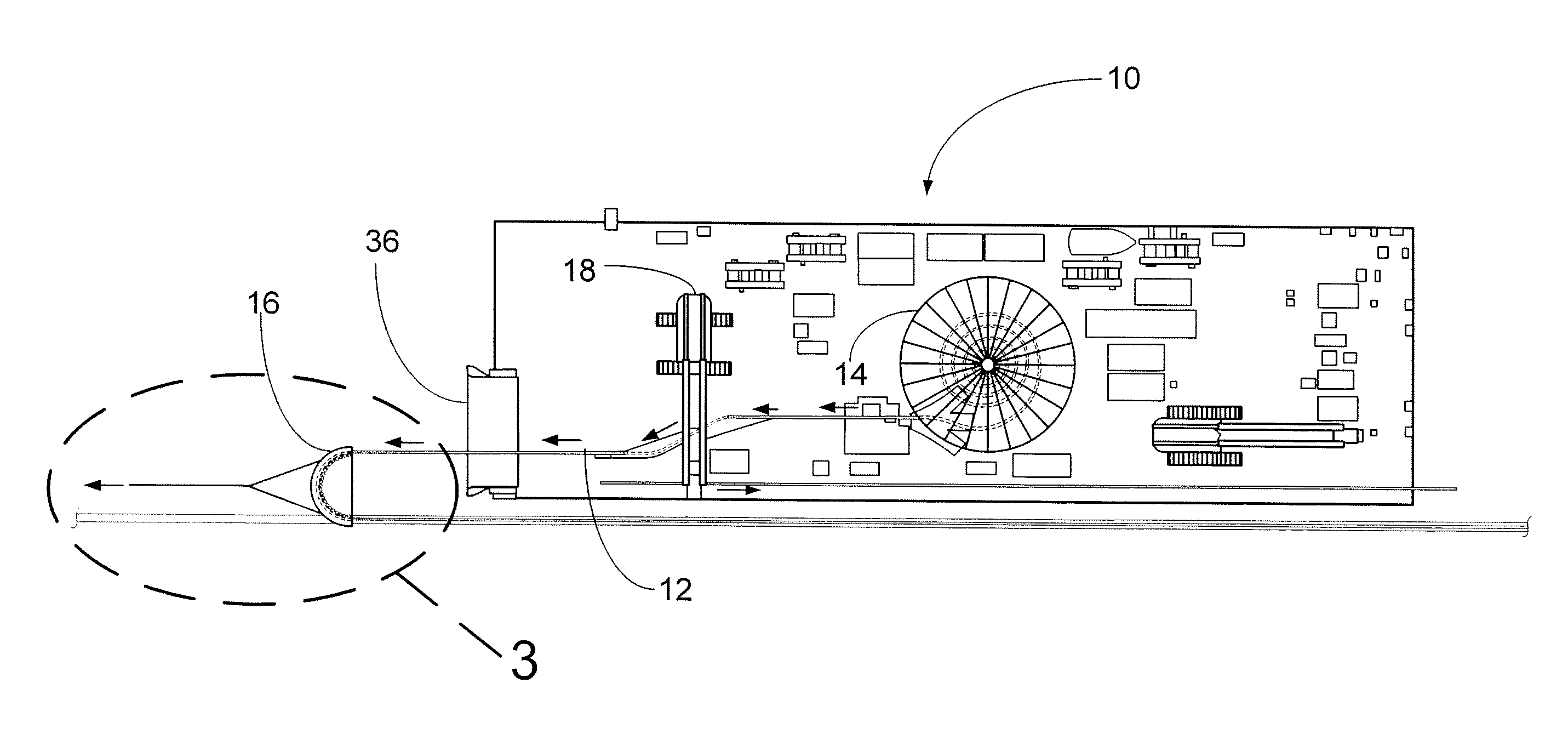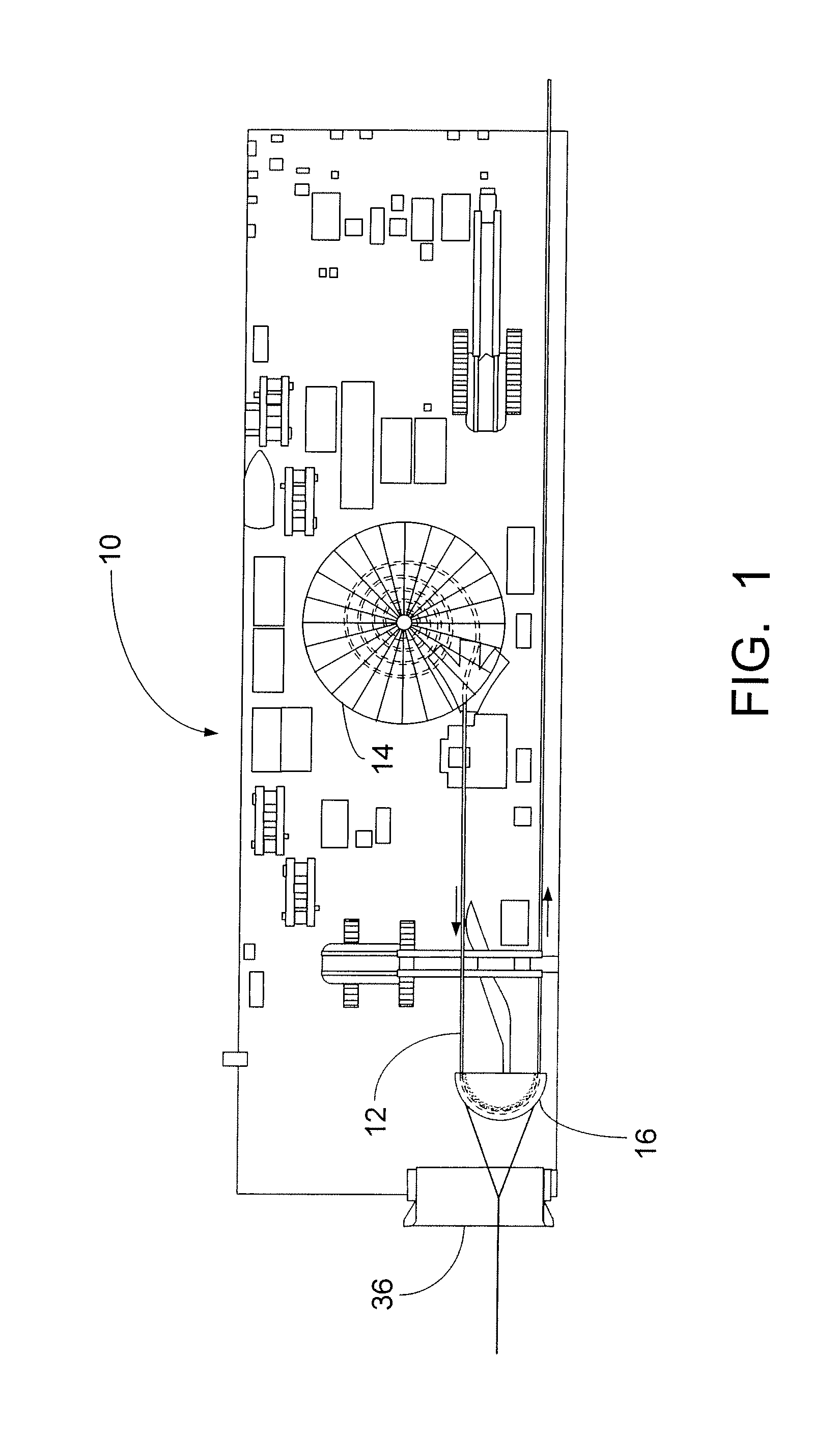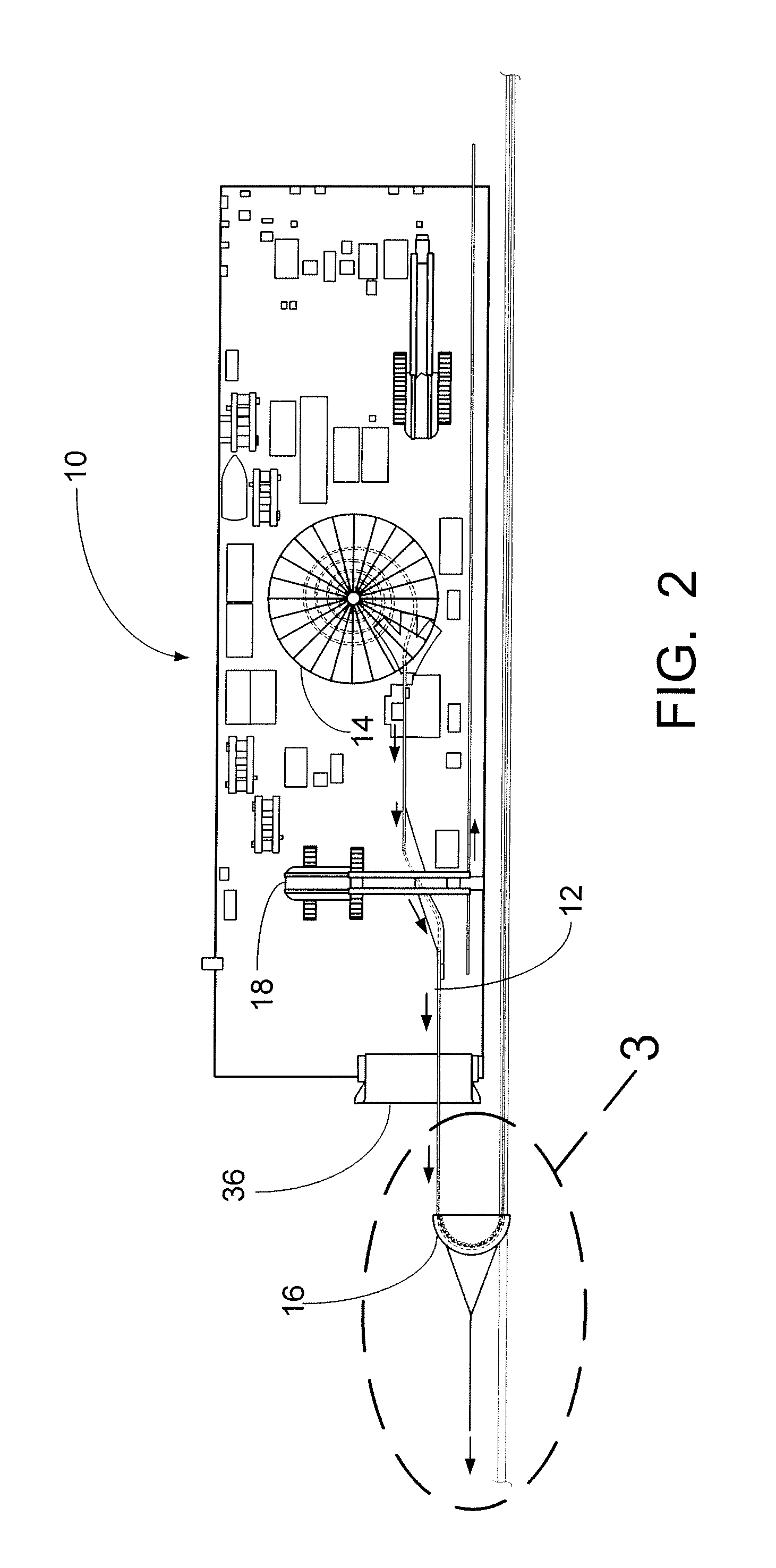Offshore Cable Laying Method
a cable laying and offshore technology, applied in the direction of cable laying apparatus, cable installation on float, electric cable installation, etc., can solve the problems of significant limitations and methods that have significant limitations
- Summary
- Abstract
- Description
- Claims
- Application Information
AI Technical Summary
Problems solved by technology
Method used
Image
Examples
Embodiment Construction
[0014]FIG. 1 is a plan view of a cable lay barge 10 that has been moved as close as possible to shore while laying cable. The barge 10 has reached the shallowest water depth possible and the remainder of the cable 12 to be laid and brought on shore is preferably in the carousel 14 on the barge 10.
[0015]It should be understood that the term “cable” as it is used herein is intended to mean any flexible pipe or cable-like product that is coiled in a carousel, basket or on a reel and required to be laid along a route between an offshore location and on-shore location. This can typically be any of all of the following:[0016]flexible pipe or flowline for conveying fluids;[0017]umbilical containing multiple cores for conveying different services including power, hydraulic, chemical and fiber optic transmissions;[0018]composite cable for power transmission and other services including fiber optic communication lines.
[0019]As seen in FIG. 2, the roller quadrant 16 has been lifted from the de...
PUM
 Login to View More
Login to View More Abstract
Description
Claims
Application Information
 Login to View More
Login to View More - R&D
- Intellectual Property
- Life Sciences
- Materials
- Tech Scout
- Unparalleled Data Quality
- Higher Quality Content
- 60% Fewer Hallucinations
Browse by: Latest US Patents, China's latest patents, Technical Efficacy Thesaurus, Application Domain, Technology Topic, Popular Technical Reports.
© 2025 PatSnap. All rights reserved.Legal|Privacy policy|Modern Slavery Act Transparency Statement|Sitemap|About US| Contact US: help@patsnap.com



